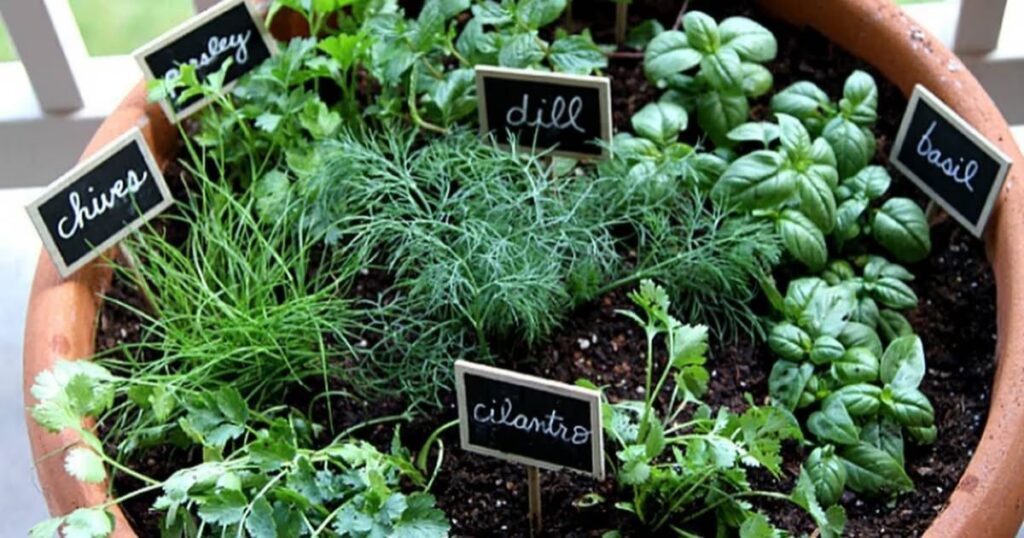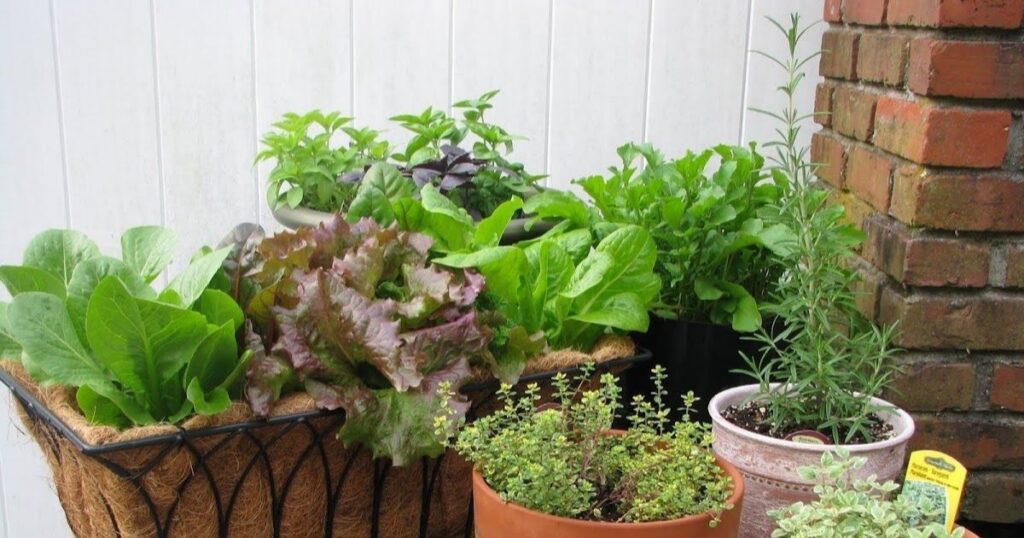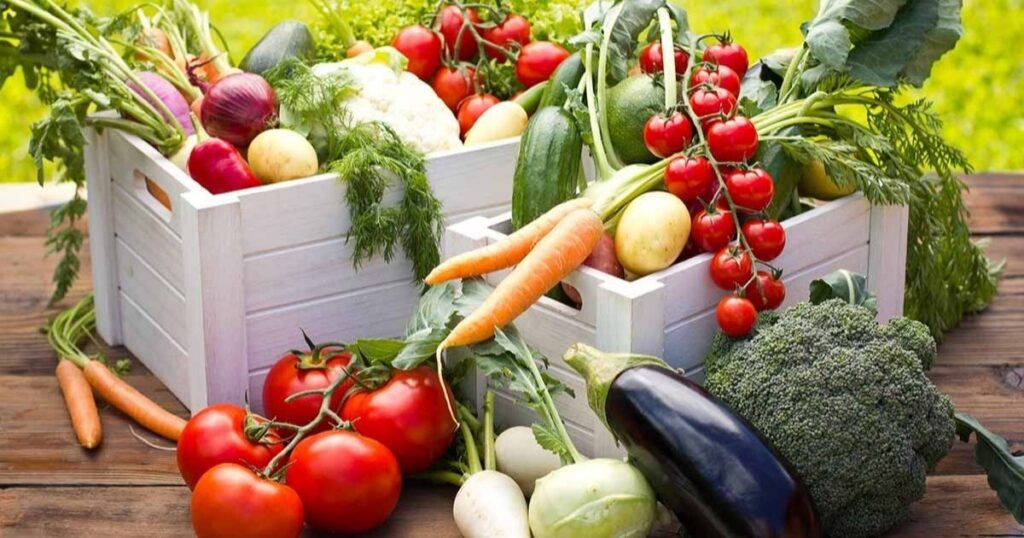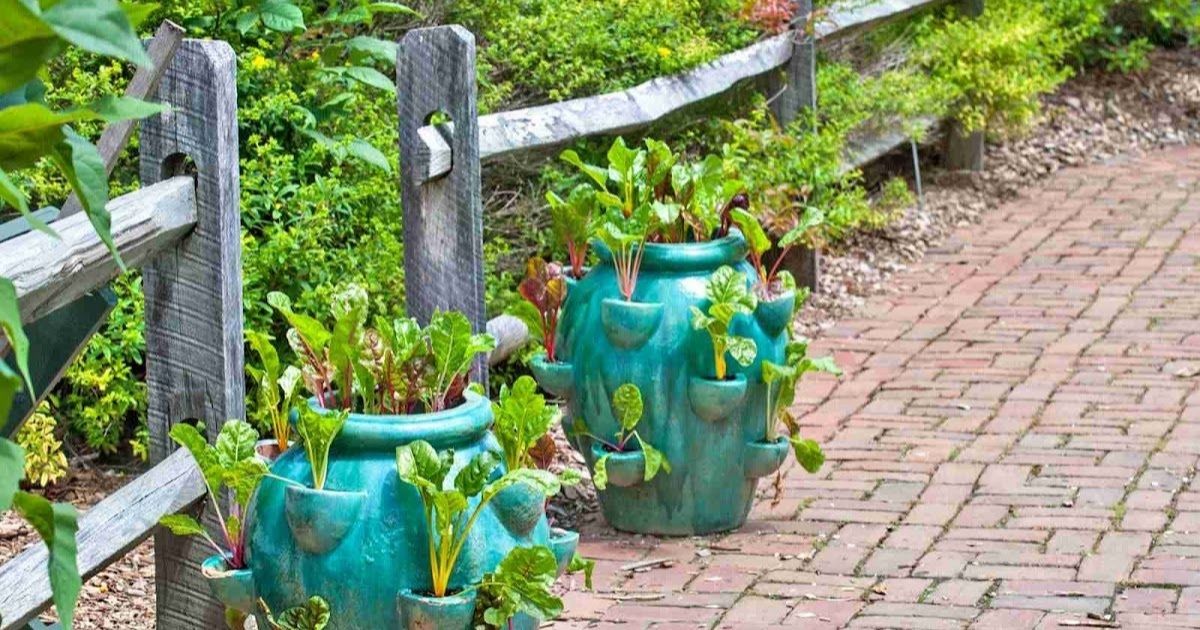Are you dreaming of fresh, homegrown vegetables but lack the space for a traditional garden? Vegetable container gardening might be the perfect solution for you! This method of urban gardening allows you to grow a variety of herbs and vegetables in pots, buckets, or raised garden containers, making it ideal for beginners, apartment dwellers, or those with limited outdoor space. In this comprehensive guide, we’ll explore the benefits of container gardening, what plants thrive in containers, and essential tips to get you started on your vegetable gardening journey.
Benefits of Vegetable Container Gardening
Container gardening offers numerous advantages for both novice and experienced gardeners alike. Let’s dive into the key benefits that make this form of vegetable gardening so appealing.
Efficient Use of Space
One of the primary advantages of container gardening is its efficient use of space. This urban gardening technique allows you to grow vegetables and herbs in small areas such as balconies, patios, or even indoor spaces with adequate light. By utilizing vertical space and choosing appropriate container types, you can maximize your growing area and produce a surprising amount of food in a limited footprint.
Container gardens can be set up on windowsills, hung from balcony railings, or arranged on tiered shelves to make the most of available space. This flexibility makes it possible for urban dwellers to enjoy fresh produce without the need for a large yard or garden plot.
Environmental Optimization
Container gardening gives you greater control over your plants’ environment. You can easily move pots to optimize sunlight exposure, protect plants from harsh weather conditions, or adjust their growing conditions as needed. This flexibility is particularly beneficial in regions with unpredictable climate patterns or for gardeners looking to extend their growing season.
For instance, you can move heat-loving plants like tomatoes and peppers to warmer spots during cool periods, or provide shade for leafy greens during the hottest parts of summer. This level of control allows you to create microclimates that suit each plant’s specific needs, potentially increasing your overall yield.
Accessibility and Container Gardening
Gardening accessibility is a significant advantage of container gardening. Raised garden containers and elevated planters make it easier for individuals with mobility issues or back problems to tend to their plants without bending or kneeling. This aspect of container gardening opens up the joy of growing vegetables to a wider range of people, including those with disabilities or limited physical capabilities.
Container gardens can be set up at comfortable heights, eliminating the need for excessive bending or kneeling. This makes gardening more accessible for seniors, people with back problems, or those using wheelchairs. The ability to garden at a comfortable height not only reduces physical strain but also makes the gardening experience more enjoyable and sustainable in the long term.
Soil Control
With container gardening, you have complete control over the soil mix used for your plants. This is especially beneficial if your native soil is poor quality or contaminated. You can create the perfect soil blend tailored to the specific needs of each plant, ensuring optimal growing conditions and nutrient availability.
You can adjust the soil pH, improve drainage, or increase organic matter content to suit the needs of different plants. This level of control is particularly beneficial for plants with specific soil requirements, such as blueberries, which prefer acidic soil, or Mediterranean herbs that thrive in well-draining, sandy soil.
Also read this post:the best-tasting cherry tomatoes to grow in your home garden,
Fewer Pest Problems
While container gardens are not immune to pests, they generally experience fewer pest problems compared to traditional in-ground gardens. The elevated nature of container plants makes them less accessible to ground-dwelling pests, and it’s easier to spot and address pest issues early on. Additionally, if a plant becomes infested, you can easily isolate it to prevent the problem from spreading to other plants.
Container gardening also allows for easier implementation of pest control measures. You can use physical barriers like row covers or netting more effectively in a container setup. Moreover, the ability to move containers makes it easier to clean and sterilize the growing area if necessary, reducing the risk of pest problems persisting from one season to the next.
Aesthetics and Versatility
Container gardening allows for greater creativity and versatility in garden design. You can easily change the layout of your garden, experiment with different plant combinations, and add visual interest to your space. Colorful pots, unique container types, and the ability to move plants around make container gardens an attractive addition to any outdoor or indoor space.
You can create themed container gardens, such as a pizza garden with tomatoes, basil, and oregano, or a salsa garden with tomatoes, peppers, and cilantro. The versatility of container gardening also allows you to adapt your garden to changing tastes or seasonal preferences with minimal effort.
What herbs and vegetables thrive in container gardening?

Many plants adapt well to container gardening, allowing you to grow a diverse range of vegetables and herbs. Here’s a list of plants that particularly thrive in containers:
Vegetables:
- Tomatoes: Cherry and determinate varieties work especially well in containers. They require larger pots (at least 5 gallons) and sturdy support.
- Peppers: Both sweet and hot peppers thrive in pots. They prefer warm conditions and consistent moisture.
- Lettuce and leafy greens: Perfect for shallow containers and quick harvests. These cool-season crops can be grown in partial shade.
- Eggplants: Compact varieties are ideal for container growing. They need full sun and rich, well-draining soil.
- Cucumbers: Choose bush varieties for smaller spaces. Provide a trellis or cage for support.
- Carrots: Short varieties work well in deeper containers. Ensure loose, stone-free soil for straight roots.
- Radishes: Fast-growing and perfect for small pots. They’re great for succession planting.
- Bush beans: These compact plants are great for containers. They don’t require support and produce quickly.
- Peas: Dwarf varieties can be grown in pots with proper support. They prefer cooler temperatures.
- Zucchini and summer squash: Compact varieties work well in larger containers. They need full sun and regular harvesting.
Herbs:
- Basil: A must-have for any herb garden, thrives in containers. Pinch off flower buds to encourage leafy growth.
- Mint: Best grown in containers to prevent spreading. It’s vigorous and can tolerate partial shade.
- Rosemary: Loves well-draining soil and full sun. It’s drought-tolerant once established.
- Thyme: Perfect for small pots or hanging baskets. It prefers full sun and well-draining soil.
- Parsley: Both curly and flat-leaf varieties do well in containers. It can tolerate partial shade.
- Cilantro: Easy to grow and perfect for frequent harvesting. It prefers cool temperatures and can bolt in heat.
- Chives: Grow well in small pots and add flavor to many dishes. They’re perennial and can overwinter in many climates.
- Oregano: Thrives in containers and is perfect for Mediterranean cuisine. It prefers full sun and well-draining soil.
- Sage: Prefers well-draining soil and full sun. It’s drought-tolerant once established.
- Dill: Can be grown in deeper pots for full development. It attracts beneficial insects to your garden.
What is a good soil mix for container gardening?
The right soil mix is crucial for successful container gardening. Unlike traditional garden soil, container soil needs to be lighter, well-draining, and rich in nutrients. Here’s a recipe for a good all-purpose container soil mix:
- 1 part high-quality potting soil
- 1 part compost
- 1 part perlite or vermiculite
- A handful of slow-release organic fertilizer
This mix provides a good balance of nutrients, moisture retention, and drainage. The potting soil and compost provide essential nutrients, while the perlite or vermiculite improves drainage and prevents soil compaction. The slow-release fertilizer ensures a steady supply of nutrients throughout the growing season.
For plants that prefer more acidic soil, such as blueberries or some herbs, you can add some peat moss to lower the pH. Remember to adjust your soil mix based on the specific needs of your plants.
Avoid using garden soil in containers, as it’s too heavy and can become compacted, leading to poor drainage and root health issues. Also, garden soil may contain weed seeds, pests, or diseases that can harm your container plants.
What kind of containers should you use?

Choosing the right container types is essential for successful vegetable gardening. Here are some factors to consider:
Drainage holes
Proper drainage is crucial for plant health. Always choose containers with adequate drainage holes to prevent waterlogging, which can lead to root rot. If you find a perfect container without drainage holes, you can often drill your own but be cautious with ceramic or glass containers.
The number and size of drainage holes depend on the container size. As a general rule, a 12-inch pot should have at least three 1/2-inch drainage holes. For larger containers, more or larger holes may be necessary.
Clay/terracotta vs. plastic
Both clay/terracotta and plastic containers have their advantages:
- Clay/terracotta: These porous materials allow air and water exchange, promoting healthy root growth. They’re also aesthetically pleasing but can dry out quickly in hot weather. Clay pots are heavier, which can be an advantage for tall plants as they’re less likely to tip over.
- Plastic: Lightweight and affordable, plastic containers retain moisture well. They’re ideal for moisture-loving plants but may need more frequent drainage checks. Plastic pots are available in a wide range of colors and styles, allowing for greater design flexibility.
Choose based on your climate, watering habits, and aesthetic preferences. In hot, dry climates, plastic might be preferable to reduce water loss, while in humid areas, clay pots can help prevent overwatering.
Containers for large plants
For larger vegetables like tomatoes, eggplants, or peppers, use containers that are at least 5 gallons in capacity. Large plastic buckets, half barrels, or dedicated vegetable containers work well. Ensure they’re deep enough to accommodate the plant’s root system.
When choosing containers for large plants, consider:
- Size: Bigger is generally better, as it provides more room for roots and retains moisture longer.
- Material: Sturdy materials like thick plastic or wood are ideal for large plants.
- Mobility: If you plan to move the containers, consider using a plant dolly or choosing containers with built-in wheels.
Saucers
are useful for catching excess water and preventing mess on patios or balconies. However, don’t let plants sit in standing water for extended periods, as this can lead to root rot. Empty saucers after watering or rain to prevent water accumulation.
For indoor container gardening, saucers are essential to protect floors and furniture. Choose saucers that are slightly larger than the base of your pot to catch any overflow.
Rocks
Adding a layer of rocks or pebbles at the bottom of your container before adding soil can improve drainage. However, this is only necessary for very large containers or those with limited drainage holes.
While rocks can help with drainage, they also reduce the amount of soil in the container. For most plants, it’s more beneficial to use a well-draining soil mix and ensure proper drainage holes rather than adding a layer of rocks.
Watering
Proper watering is crucial for container gardening success. Container plants typically need more frequent watering than in-ground plants because they have limited soil volume. Here are some watering techniques to keep in mind:
- Water deeply: When you water, do so until water runs out of the drainage holes. This ensures the entire root ball gets moistened and encourages deeper root growth.
- Check soil moisture regularly: Stick your finger about an inch into the soil. If it feels dry, it’s time to water. Different plants have different water needs, so adjust your watering schedule accordingly.
- Water in the morning: This allows plants to take up water before the heat of the day and reduces water loss through evaporation. It also helps prevent fungal diseases that can develop when leaves stay wet overnight.
- Use mulch: A layer of organic mulch on top of the soil can help retain moisture and reduce watering frequency. Mulch also helps regulate soil temperature and suppress weed growth.
- Consider self-watering containers: These have a water reservoir at the bottom and can be helpful for consistent moisture levels. They’re particularly useful if you’re away from home frequently or have plants with high water needs.
- Adjust for weather conditions: Plants will need more frequent watering during hot, dry periods and less during cool or rainy weather.
- Use room temperature water: Cold water can shock plant roots. If possible, use rainwater or let tap water sit out overnight to reach room temperature and allow chlorine to dissipate.
Ollas
Ollas are an ancient and effective watering technique that works well for container gardening. These unglazed clay pots are buried in the soil and filled with water. The water slowly seeps through the clay, providing consistent moisture to plant roots. Ollas can significantly reduce water usage and ensure even soil moisture.
To use ollas in your container garden:
- Choose an appropriately sized olla for your container.
- Bury it in the soil, leaving the neck exposed.
- Fill the olla with water.
- Refill as needed, typically every few days to a week, depending on weather conditions and plant needs.
Ollas are particularly useful for plants that prefer consistent moisture, like tomatoes and cucumbers. They can also help reduce the frequency of watering, making them ideal for busy gardeners or during vacations.
Fertilizing

Container plants need regular fertilization because nutrients in the limited soil volume are quickly depleted. Here are some tips for fertilizing your container garden:
- Use a balanced, water-soluble fertilizer every 2-3 weeks during the growing season. Look for a fertilizer with equal parts nitrogen, phosphorus, and potassium (such as a 10-10-10 blend) for most vegetable plants.
- Alternatively, use a slow-release granular fertilizer at the beginning of the season and supplement with liquid fertilizer as needed. Slow-release fertilizers provide a steady supply of nutrients over several months.
- For organic gardening, use compost tea, fish emulsion, or other organic fertilizers. These natural options provide a range of nutrients and can improve soil health.
- Be cautious not to over-fertilize, as this can lead to excessive foliage growth at the expense of fruit production. Signs of over-fertilization include yellowing or browning leaf edges, stunted growth, or a white crust on the soil surface.
- Always follow the instructions on your fertilizer package, as application rates can vary based on the product and plant type.
- Consider crop rotation in your containers from year to year to help balance nutrient usage. Different plants have different nutrient needs, so rotating crops can help prevent nutrient depletion in the soil.
- Pay attention to specific plant needs. For example, leafy greens typically need more nitrogen, while fruiting plants like tomatoes and peppers benefit from higher levels of phosphorus and potassium once they start flowering.
- If using compost as a fertilizer, apply a thin layer (about 1/2 inch) to the top of the soil every few weeks during the growing season.
- For long-season plants like tomatoes and peppers, consider giving them a mid-season boost with a balanced fertilizer to support continued production.
- Remember that herbs generally need less fertilizer than vegetables. Over-fertilizing herbs can reduce their flavor intensity.
By following these guidelines for container selection, soil preparation, watering, and fertilizing, you’ll be well on your way to a successful vegetable container garden. Remember that gardening is a learning process, and it’s okay to make mistakes. Observe your plants closely, adjust your care routine as needed, and don’t be afraid to experiment. With time and practice, you’ll develop a thriving container garden that provides fresh, homegrown produce right at your doorstep. Happy gardening!
FAQs
What is the easiest vegetable to grow in a container?
Lettuce is one of the easiest vegetables to grow in containers. It grows quickly and doesn’t require much space or maintenance.
What vegetables are good to grow in containers?
Many vegetables thrive in containers, including tomatoes, peppers, herbs, and leafy greens. Compact varieties of larger plants like eggplants and cucumbers can also do well in pots.
What is the best mix for container vegetables?
A well-draining potting mix specifically formulated for containers is ideal. Look for mixes that contain peat moss, perlite, and vermiculite for proper moisture retention and aeration.
What is the best plant food for container vegetables?
A balanced, water-soluble fertilizer with equal parts nitrogen, phosphorus, and potassium (NPK) works well for most container vegetables. Organic options like compost tea or fish emulsion are also effective.











